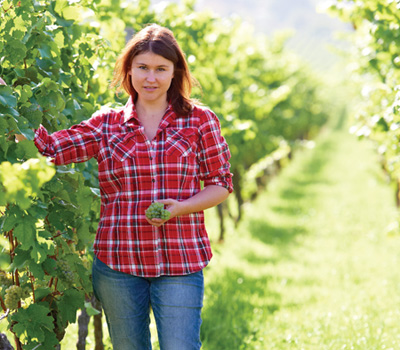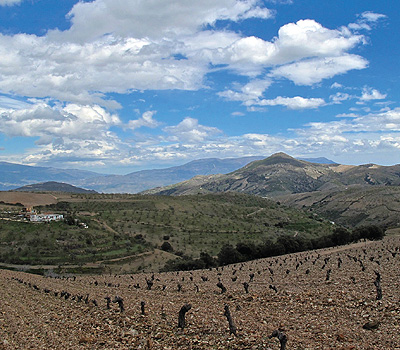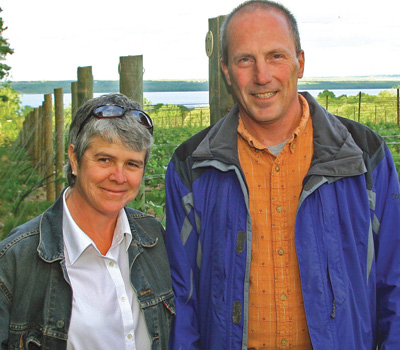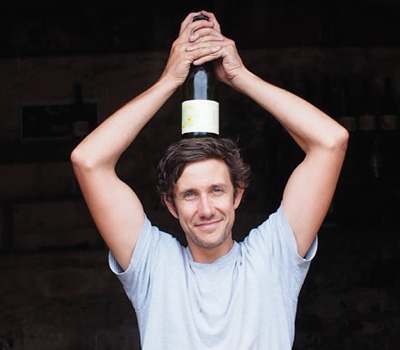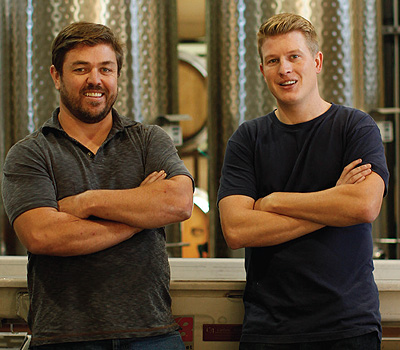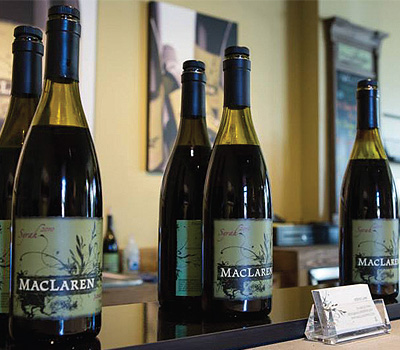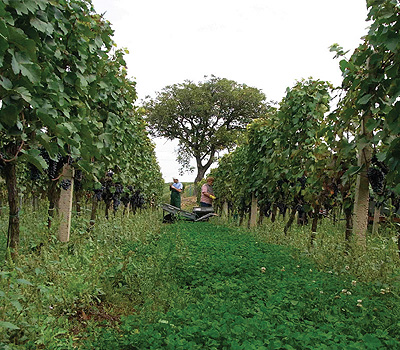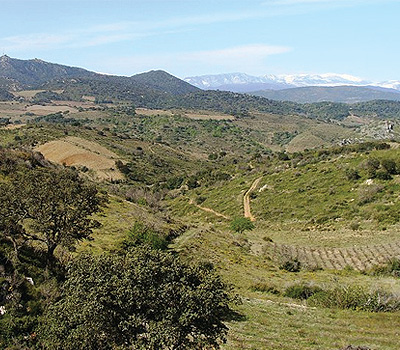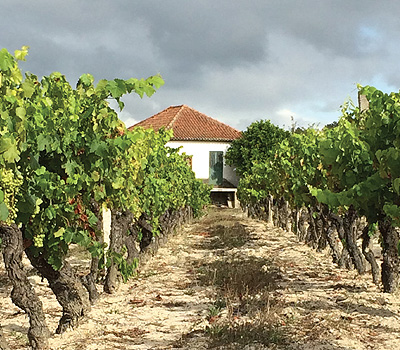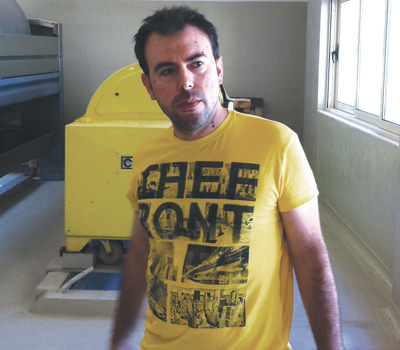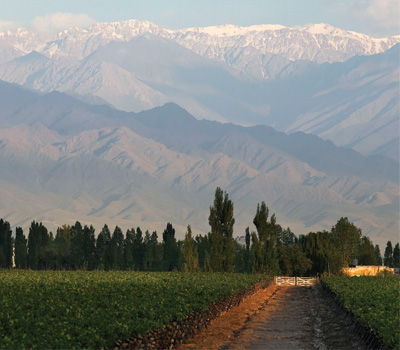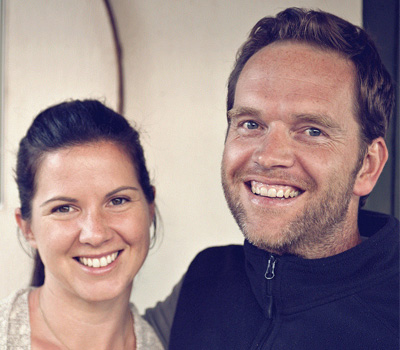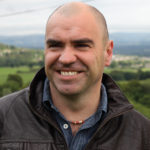These 12 producers caught our attention in our travels and again in our blind tastings. If you’re looking for discoveries, check them out. A number of last year’s Wineries to Watch are in our Top 100 this year.—
Rheinhessen, Germany | Weingut Wechsler
Stuart Pigott likes to call Germany’s Rheinhessen the Dream Factory of white wines these days, precisely because of people like Katharina Wechsler. After 11 years away from home, working in Paris, Stuttgart, Rio and Berlin, Wechsler returned to take over the family winery in Rheinhessen. But rather than selling in bulk, as her father always had, she decided to make the best of their 42 acres in Westhofen. The family’s estate includes prized parcels in Steingrube, Kirchspiel, Morstein and Benn, a monopole of 50-year-old riesling vines. After apprenticing at Gutzler and Klaus-Peter Keller, she produced her first vintage in 2009—2,000 bottles of riesling and silvaner. Now she’s known for her razor-sharp, bell-toned versions of Rheinhessen’s best varieties. Take the 2012 Scheurebe: all juicy pink-grapefruit flavor with a sharp, briny acidity that makes it mouthwatering and long. —Tara Q. Thomas
Granada, Spain | Barranco Oscuro
It’s hard to keep track of the wine scene in Spain. Grapes are being rediscovered, ancient and forgotten regions reevaluated and new wineries emerging, all lending an unprecedented dynamism to Spanish wine. One of those new names is Barranco Oscuro. Located in the Sierra de Contraviesa, the mountains near Granada, this winery operates outside of any traditions, creating crazy and original wines in a vineyard area that had been completely forgotten. Take, for example, one of the most original wines we tried in 2014, Vino Costa, a wine as unclassifiable as it is delicious. —Patricio Tapia
Finger Lakes, New York | Red Tail Ridge
Nancy Irelan was running research and development for enology and viticulture at E&J Gallo in Modesto before moving with her husband, Mike Schnelle, to the west side of Lake Seneca in 2004. Schnelle cleared the land and planted the vines and you might think, sensibly, that Irelan had come here to grow riesling…. But then why is the bottom half of their 35-acre estate dedicated to blaufrankisch, teroldego and dornfelder? In the Finger Lakes, these Alpine reds may well thrive. Teroldego and dornfelder grown at Irelan’s Red Tail Ridge make rustic country wines, ready for charcuterie on a hike in Watkins Glen, but her blaufrankisch is in the running to become a classic New York State red, with the sort of hearty elegance these northern climes bring to wine. —Josh Greene
McLaren Vale, South Australia | Jauma
A year ago Pascaline Lepeltier of NYC’s
Rouge Tomate returned from Australia buzzing about the pet’nat she’d tasted in McLaren Vale. Maybe it was the chenin connection (Lepeltier hails from the Loire), or maybe it was James Erskine’s minimalist approach to winemaking at Jauma that excited her. Curious to know, we asked Lepeltier to write a column on pet’nat (April 2014), and then we were excited ourselves when Jauma’s 2013 Blewitt Springs Pet’Nat showed up in our tastings, a crisp, dry chenin with delicate scents of spring flowers, chamomile and beeswax. Delicious stuff, as is the 2013 McLaren Vale Biggles Grenache. In a sense, this grenache might be more radical, so light in color it looks like a rosé, so delicate, subtle, bright and brisk it might change the way you think about Australian reds. —J.G.
Russian River Valley, Sonoma, California | Joseph Jewell
Micah Joseph Wirth and Adrian Jewell Manspeaker made their first wine together in 2006, purchasing one ton of Russian River pinot noir from the Oakwild Vineyard and fermenting it in a Sonoma County garage. Wirth was working at Gary Farrell at the time, and though Manspeaker had no winemaking experience, he jumped at the chance to get involved. They made their first commercial vintage in 2007—300 cases—and have slowly expanded, focusing on Russian River pinot noir. They continue to do all the cellar work themselves, bottling unfiltered wines that stand out for their delicacy and restraint in a region that sometimes pushes pinot noir in a ripe and showy direction. Try their basic 2012 Russian River Pinot Noir: It’s fantastic, firm and bright with dazzling woodland aromas. —Luke Sykora
Sonoma, California | MacLaren
Scottish native Steve Law fell for the wines of the Northern Rhône while working in the electronics business in France. When his career took him to California, he indulged his wine obsession by taking weekend courses at UC Davis and working the 2006 harvest in Dry Creek. In 2007 he went pro, launching MacLaren, and in the past few years his syrahs have turned heads at the annual Rhone Rangers tasting in San Francisco with their savory edges and lively fruit. His 2011 from the fog-influenced Atoosa’s Vineyard in the Russian River Valley might be his best yet, its rich, mouth-coating texture allied with firm tannins, lengthening into a beam of fulsome red-fruited energy. His 2011 Drouthy Neebors blend also includes some fruit from Atoosa; its intense aromas of conifer needles and peppercorn lend it a Sonoma equivalent of garrigue. —L.S.
Burgenland, Austria | Judith Beck
At VieVinum this past year, blaufränkisch was getting some major buzz, in part due to the major focus tasting that kicked off the fair. One of the names repeatedly dropped was Judith Beck. Growing up in a family that started making wine in 1976, Judith went on to work at Cos d’Estournel, Braida and Errazuriz. She started helping out at home in 2001, taking over completely with the 2006 vintage. Now 35, Beck farms 33 acres in Gols, all under biodynamic practices, 90 percent of the plantings red: zweigelt, blaufränkisch, st. laurent and pinot noir. In addition to her blaufränkisch, her zweigelt grabbed our attention at W&S, the 2010 a delicious, spicy, juicy red that stands out for the purity of its fruit. —T.Q.T.
Roussillon, France | Domaine de l’Horizon
German-born Thomas Teibert was working in Italy’s Alto Adige when he met Gérard Gauby, who inspired him to move to France’s Roussillon. He began buying up old vineyards in Calce in 2006. Now he has 37 acres he farms biodynamically, all bush vines from 40 to 100 years old. His 2010 Vin de Pays des Côtes Catalanes Rouge, a blend of carignan and grenache, is polished and gentle, a southern wine with restraint. His 2009 Blanc, a blend of 70 percent macabeu with grenaches gris and blanc, is fleshy with white peach and almond notes filling in its oily texture, toasty notes of oak adding warmth. Both are profound and exciting finds from Pyrenees limestone soils. —T.Q.T.
Dão, Portugal | Casa de Mouraz
Last year I spent a lot of time in Lisbon and Porto working on a project for Viniportugal, selecting the 50 Great Wines of Portugal. Out of more than 600 wines that I tasted blind, two that caught my attention came from Casa de Mouraz, where Antonio Lopes Ribeiro farms his vineyards in Dão under organic and biodynamic principles. He ferments encruzado without added yeast in stainless steel, creating a cool, clean, mineral-rich white that feels like the granitic soils of the Dão. And his Elfa, a red from 80-year-old vines, farmed with the same care and made with the same simple philosophy, is a knockout, a contrast of vibrant fruit and the complexity of a mix of 30 different varieties contributing to the flavor detail. Recently, for our August issue, we tasted Ribeiro’s Bio Vinho Verde, a certified organic wine that’s fresh and floral, with the succulent depth of fruit flavor he achieves in his Dãos. —J.G.
Keretea, Greece | Mylonas
Savatiano gets little love in Greece, though that’s changing in the hands of growers like Stamatis Mylonas. A third-generation grape grower, the young Mylonas became the first in his family to bottle wine with the 2006 vintage. With 30 acres of land fanned out over 17 locations and a new winery in Keretea, Mylonas is working at warp speed to learn all he can about the potential of savatiano. He has a sparkling version, a sweet and an amphora version in the works in addition to dry versions, resinated and not. Picking early, he turns out some of the most delicate savatianos around, wild in their herbal scents. He also puts out the best mainland version of Santorini’s famed assyrtiko we’ve ever tasted, the 2010 deeply mineral and savory, its honeyed richness balanced by dry, chalky firmness. —T.Q.T.
Mendoza, Argentina | Zuccardi
These are times of radical change in Zuccardi. Sebastian Zuccardi, third-generation owner, has led this traditional winery from Mendoza to explore the region in search of new flavors for its wines. At their new winery in Altamira, they are creating a series of wines deeply identified with their origins. Today, Zuccardi has a battery of malbecs, bonardas and even cabernet sauvignon with a strong sense of place, wines that capture this moment of profound change in Argentina today. If you want an example, taste the refreshing and juicy Polígono San Pablo, which comes in at a relatively low 12 percent alcohol. It’s a style of malbec that’s completely new in Argentina. —P.T.
Swartland, South Africa | Mullineux
These are times of radical change in Zuccardi. Sebastian Zuccardi, third-generation owner, has led this traditional winery from Mendoza to explore the region in search of new flavors for its wines. At their new winery in Altamira, they are creating a series of wines deeply identified with their origins. Today, Zuccardi has a battery of malbecs, bonardas and even cabernet sauvignon with a strong sense of place, wines that capture this moment of profound change in Argentina today. If you want an example, taste the refreshing and juicy Polígono San Pablo, which comes in at a relatively low 12 percent alcohol. It’s a style of malbec that’s completely new in Argentina. —J.G.
This story was featured in W&S Winter 2014.
Longtime senior editor at Wine & Spirits magazine, Luke now works for the Stanford Technology Ventures Program.
Joshua Greene is the editor and publisher of Wine & Spirits magazine.
is the author of Descorchados, an annual guide to the wines of South America, and covers Chile for W&S.
is W&S’s editor at large and covers the wines of the Mediterranean and Central and Eastern Europe for the magazine.
This story appears in the print issue of Winter 2014.
Like what you read? Subscribe today.
